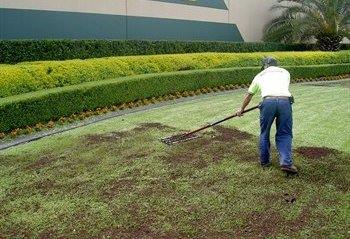The best time to level uneven spots on your lawn is when your yard is experiencing robust growth. This is mostly during spring or summer though it depends on the type of grass grown on your lawn. Your lawn naturally becomes uneven as time passes, and adding the topsoil to the low areas helps in patching it up. Also, leveling the lumps and bumps makes it possible for you to plant grass or other plants in the leveled area. The best way to repair low areas is by using friable soil. Friable soil is easy to spread on the uneven sections on your lawn. It is best if you keep the mixture moist to prevent clumps that can easily suffocate the grass in your yard. When leveling your yard with topsoil, you need to consider the following:

Soil pH
When spreading topsoil on to the low areas on your lawn, it would help if you verify the pH level of the soil in the low sections.
If the soil is not slightly acidic or neutral, you can amend it to the required levels. This is necessary because improper PH levels can harm the grass on your lawn.
Timing
Weeds grow easily on the topsoil used in filling the low areas on your lawn. To prevent weeds from growing, you need to add the topsoil towards the end of summer.
Fewer weeds grow towards the end of summer, and the heat and light from the sun is adequate for your intended plants to grow and blossom.
Depth of the Topsoil
You need to add half an inch of topsoil to the low areas to level them. The thin layer does not cover any leaf blades, and the waiting period is ample for the soil to settle.
Contact us for expert advice on the best topsoil to use in leveling your yard and the factors to consider during the process.
